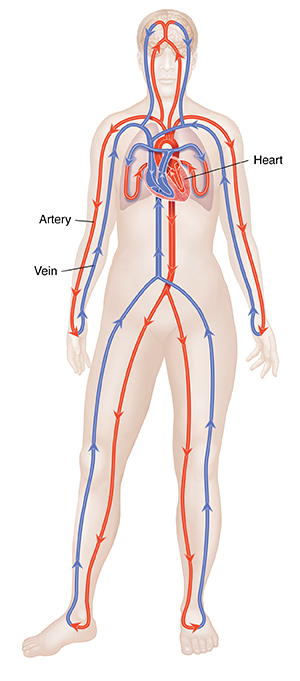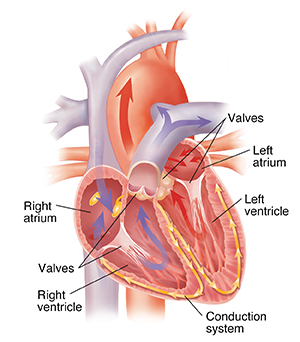Basic Anatomy of the Heart
About the heart
The heart is the hardest working muscle in the human body. The heart is located almost
in the center of the chest. The adult human heart is about the size of a fist.
At rest, a normal heart rate for adults is 60 to 100 beats per minute. In a well-trained
athlete, the resting heart rate can be healthy at a rate of 40 to 60 beats per minute.
With exercise, the heart beats faster and the heart rate increases to get more oxygen
to the muscles.
How the heart works
The cardiovascular system is made up of the heart and blood vessels. Its job is to
circulate blood throughout your body. The blood brings oxygen and nutrients to the
tissues.

The heart is made up of:
-
4 chambers (2 atria and 2 ventricles) that get blue (deoxygenated) blood from the
body. They pump out red (oxygen-rich) blood back to it:
-
Blood vessels that include a network of arteries and veins that carry blood throughout
the body:
-
4 valves to prevent backward flow of blood:
-
An electrical system that serves as a natural pacemaker. It also conducts electricity
to stimulate the heart muscles to contract. This controls the rate and rhythm of the
heartbeat.
